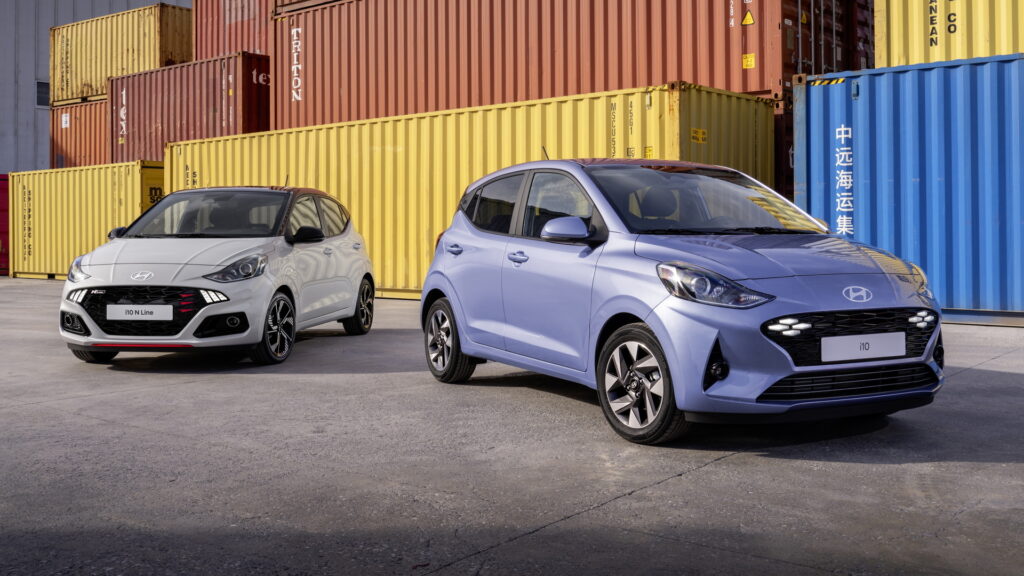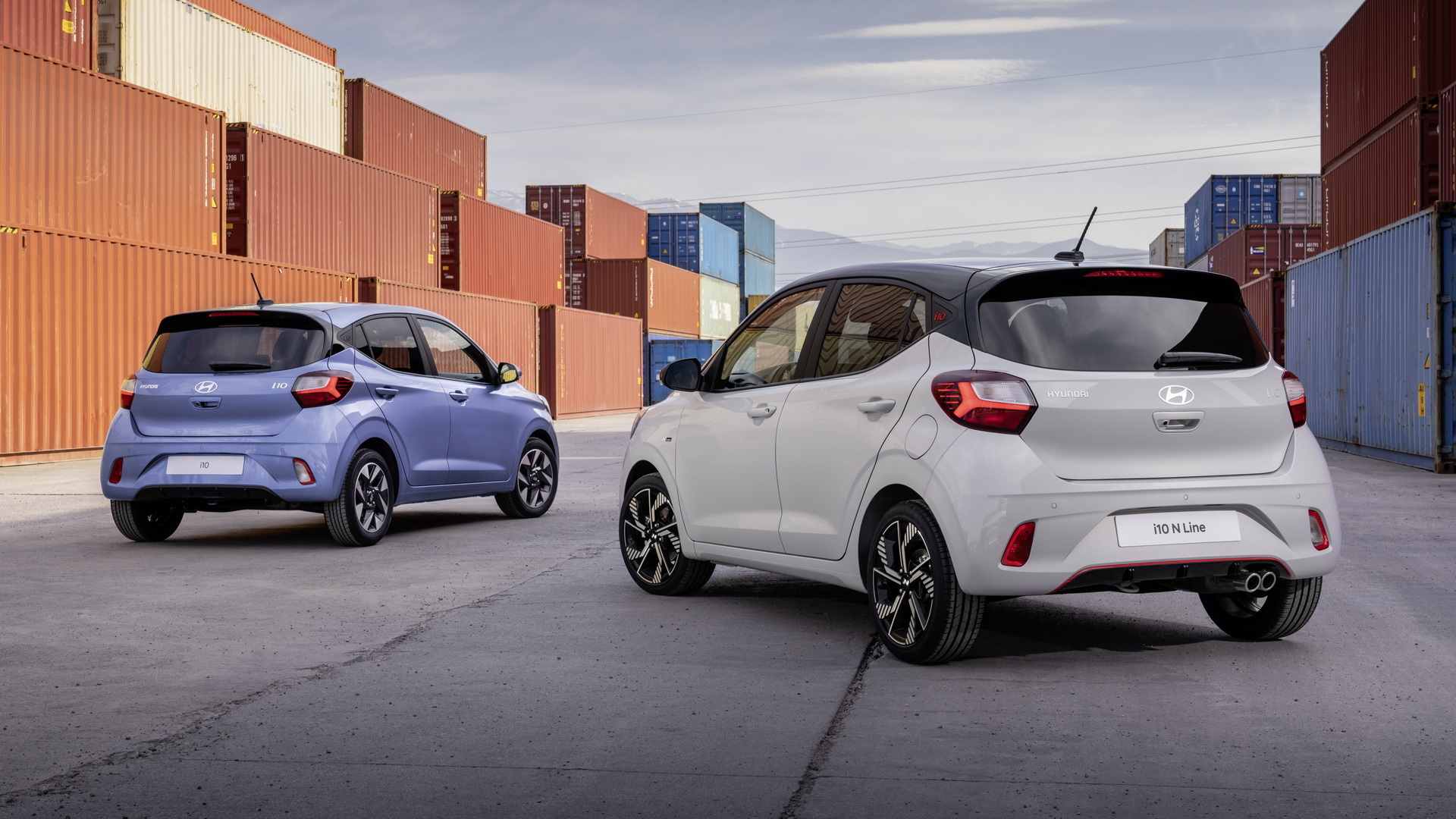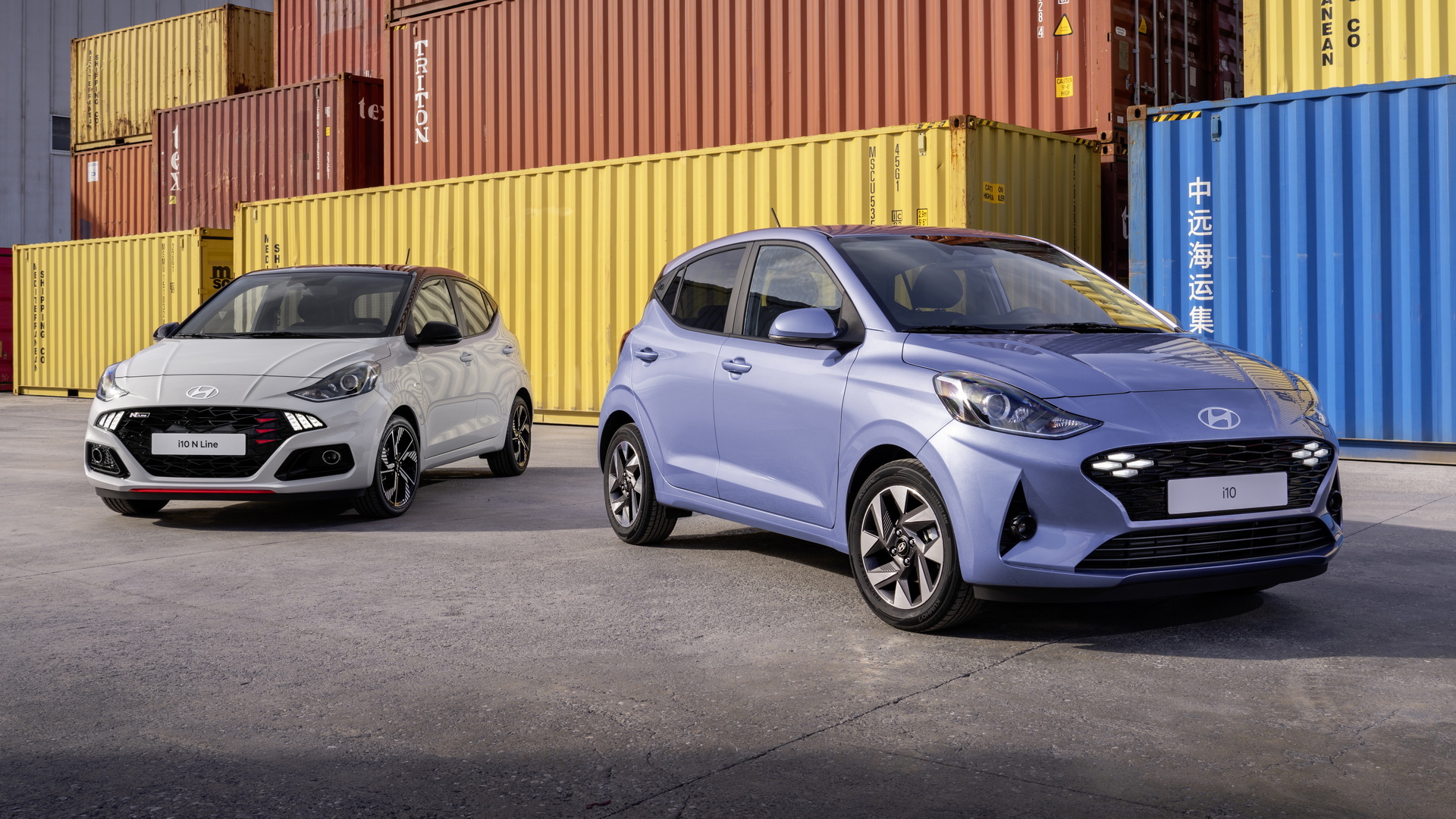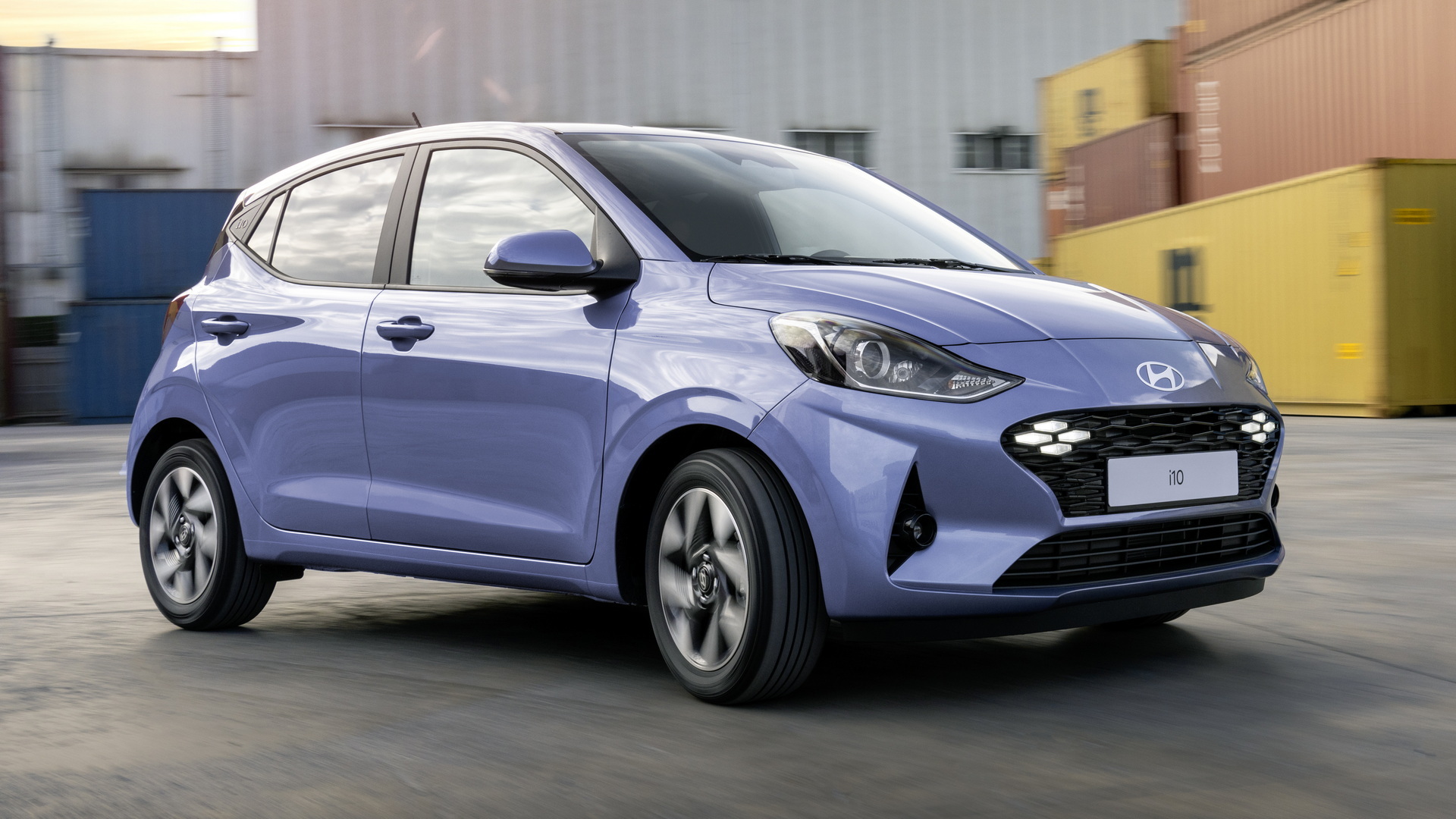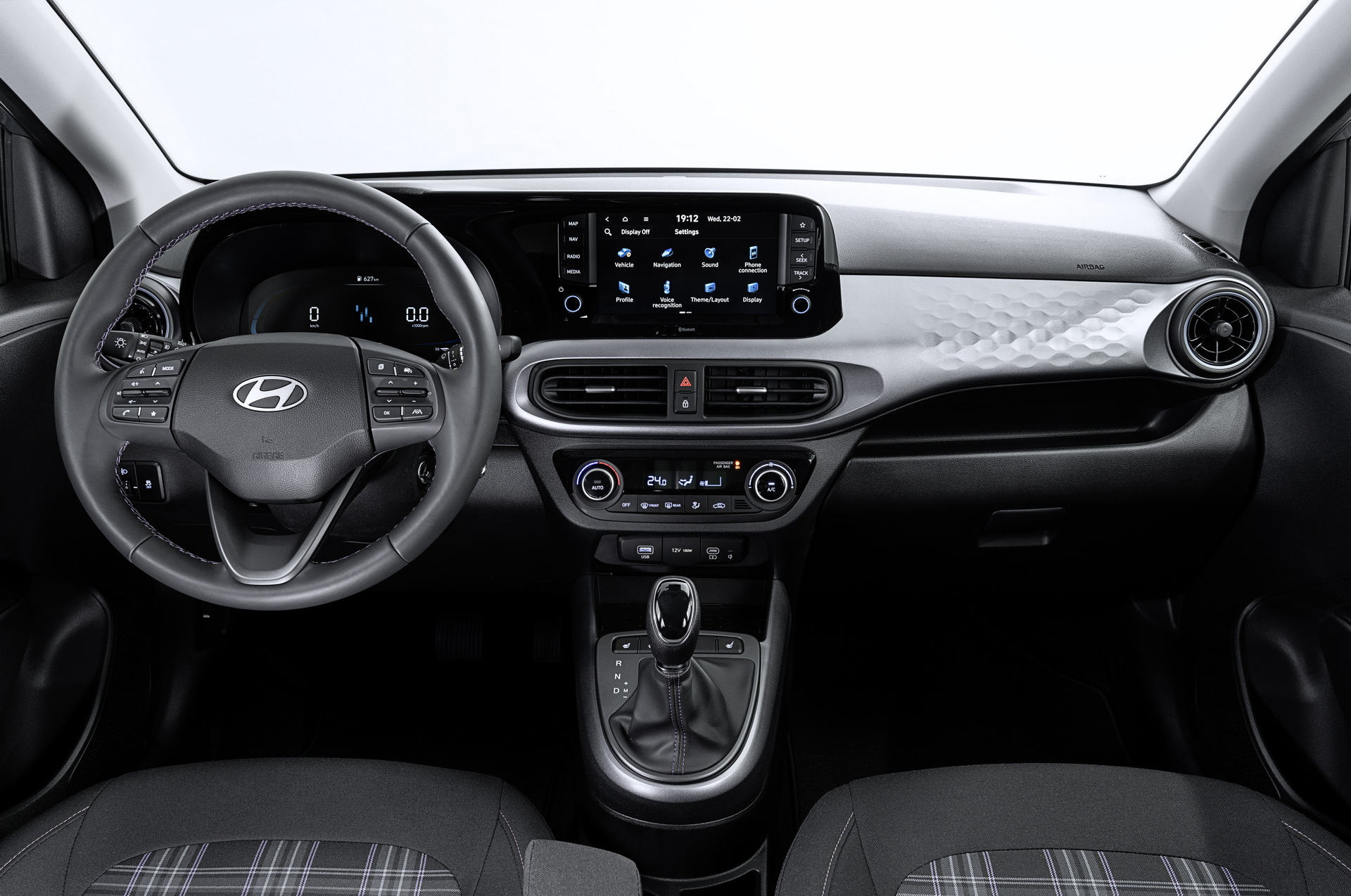While many automakers have abandoned the less profitable urban segment in Europe – at least regarding the ICE-powered models – Hyundai renewed its commitment with the reveal of the facelifted i10. The model benefits from mild visual tweaks including new color combinations, and additional features inside the cabin while the flagship N Line trim remains part of the range.
Starting with the exterior, the 2023 Hyundai i10 doesn’t look that much different from its predecessor which was originally introduced in 2019. In fact, the only thing that stands out at first glance is the honeycomb-shaped DRLs on the grille, replacing the previous round units.
Read: Hyundai Updates The Grand i10 Nios And Aura Siblings
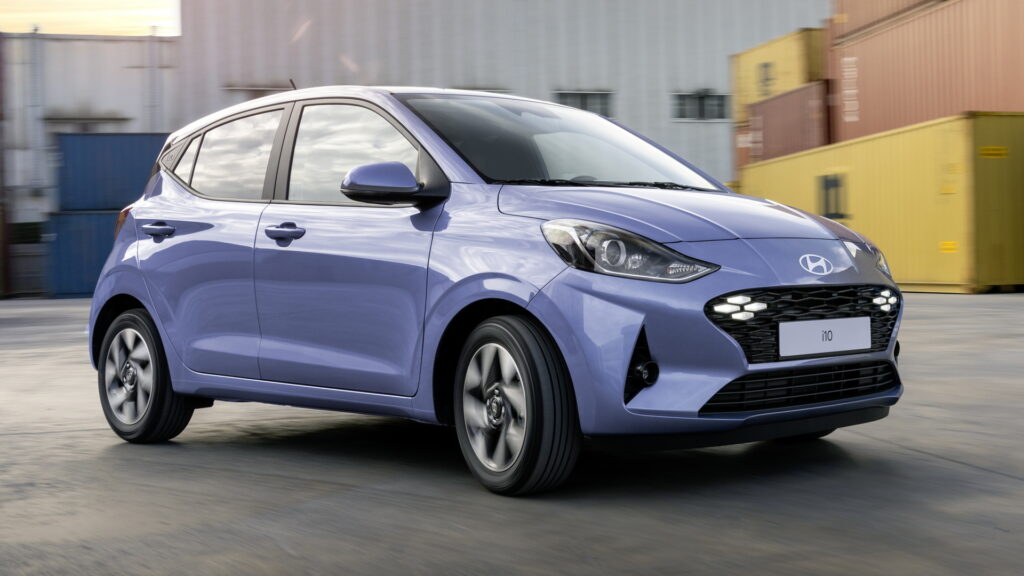
A closer look reveals the new pattern on the grille and lower bumper intake, and the fresh LED graphics for the taillights. Hyundai updated the color palette with two new shades – Lumen Grey and Meta Blue – alongside a new set of 15-inch alloy wheels. It is even harder to spot the differences in the Hyundai i10 N Line, as the version-specific bodykit has been carried over, limiting the updates to the lighting units and the new 16-inch alloy wheels.
Moving inside, Hyundai added blue ambient lighting on the footwells, and a “triple red line fabric” for the seat backs of the i10 N Line which is differentiated by the red accents and the N Line badges. For the regular i10 there is a new “Purple Package” adding a purple flavor to the tartan fabric seats, stitching, air vents, and a purple sheen on the grey touchpoints.
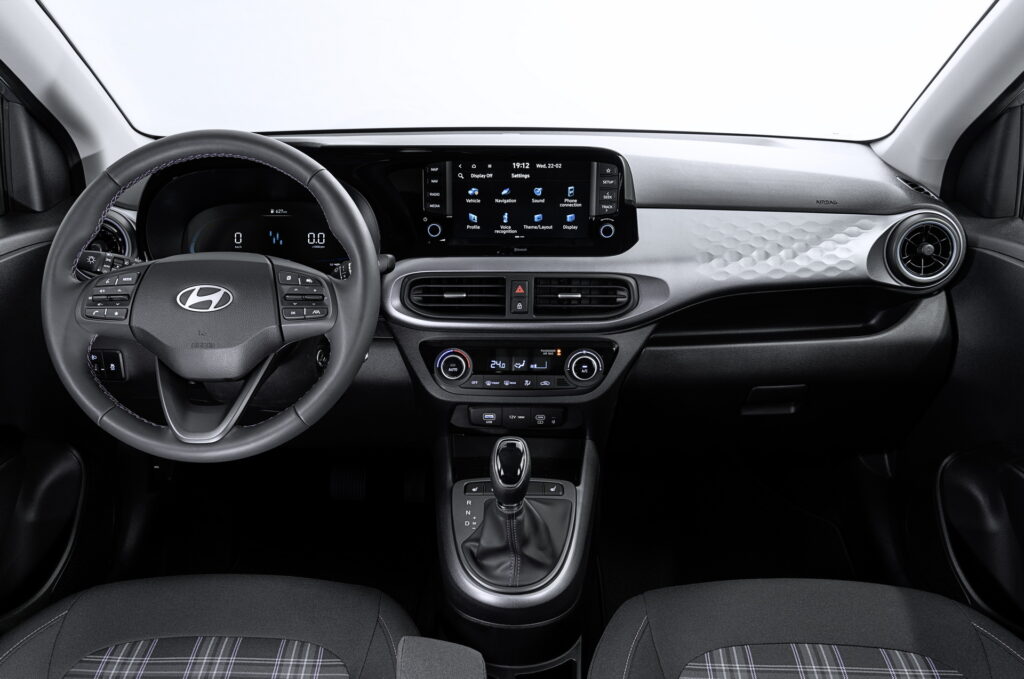
In terms of technology, there is a new 4.2-inch digital instrument cluster fitted as standard, an 8-inch infotainment touchscreen which is now compatible with wireless Apple CarPlay and Android Auto, a rear-view camera, OTA updates for the maps, a wireless charging pad, front and rear USB-C ports, plus a more generous ADAS package (Hyundai Smart Sense).
While Hyundai detailed the exterior and interior design of the i10, it didn’t give us any information on the powertrains. Note that the current model is available with the naturally aspirated 1.0 MPi three-cylinder producing 66 hp (49 kW / 67 PS), the 1.2 MPi four-cylinder producing 83 hp (62 kW / 84 PS), and the turbocharged 1.0 TGD-i producing 99 hp (74 kW / 100 PS). The latter equips the flagship Hyundai i10 N Line which also benefits from a sportier suspension setup to go with the aggressive bodykit.
Production of the facelifted Hyundai i10 will commence in April 2023 in Izmit, Turkey. The first deliveries in European markets are expected in the second half of the year. Rivals of the model in the A-Segment include the Kia Picanto stablemate, the Toyota Aygo X, and the Suzuki Ignis.




